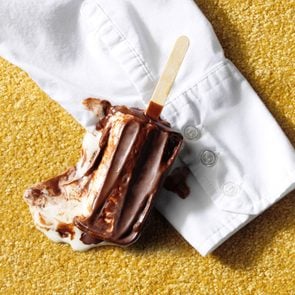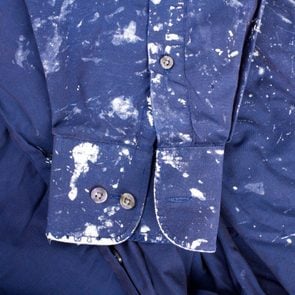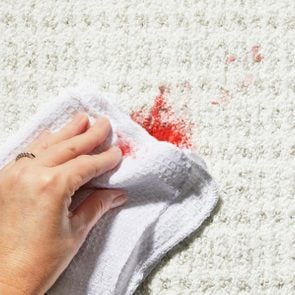How to Get Crayon Off the Wall in Minutes
Updated: Apr. 18, 2024
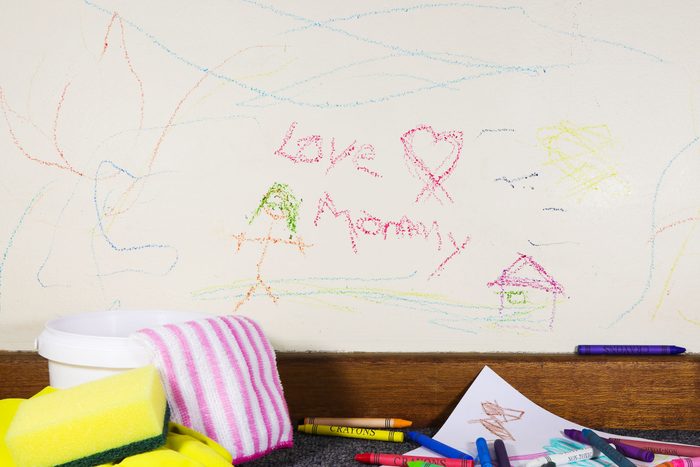
Did your kids surprise you with some new artwork? Here’s how to get crayon off walls quickly and easily, according to a cleaning expert.
Young children and crayons are a terrific combination … but you might rethink that statement when the resulting “art” ends up on your walls. Trust me: I know how painful this is. I had been wanting to paint my family room for ages, and I finally went from boring builder’s white to Revere Pewter. It was perfect—until my then-preschoolers decided to make the color a little more exciting with a massive crayon mural. I wasn’t happy, to say the least, but thankfully I knew how to get crayon off the wall.
As a cleaning expert with more than 15 years of experience, a former art teacher and a mom of three, I have seen my fair share of crayon marks, and the best advice I can give you is not to panic. The stains won’t get worse if you take a minute to figure out the best course of action—this is likely as bad as it’s going to get. That said, crayons are made from wax and petroleum oil, and they require the right cleaning products and techniques to remove fully and properly (i.e., without removing the paint from your walls along with the crayon marks).
Ahead, you’ll find my favorite cleaning method for making those crayon stains a distant memory in just minutes, as well as a few other reliable alternatives. It’s easier than you think, and even better? You probably already have the products you need, so you can get started right away.
Get Reader’s Digest’s Read Up newsletter for more cleaning, tech, travel, humor and fun facts all week long.
| Reviewed for accuracy by: Ann Russell, TikTok’s “cleaning auntie” and the author of How to Clean Everything. |
How to get crayon off the wall using my go-to method
My tried-and-true method for getting crayon off the walls? A simple paste made from water and baking soda. A mild abrasive, baking soda gently rubs off the crayon wax, and once the wax lifts, so does the crayon pigment. I’ve found that it’s super easy and usually requires only one pass with the paste.
This natural cleaning solution is also safe for most painted walls and doors, regardless of the paint sheen, but as with all stain-removal techniques, do a quick spot test in an inconspicuous area first. Once you’ve determined there’s no damage, you can safely try this on the kiddie-created mural on your wall.
Supplies you’ll need
- Baking soda
- Warm water
- 2 to 3 clean, soft cloths—preferably microfiber cloths
- Bowl
Step 1: Make a baking-soda paste
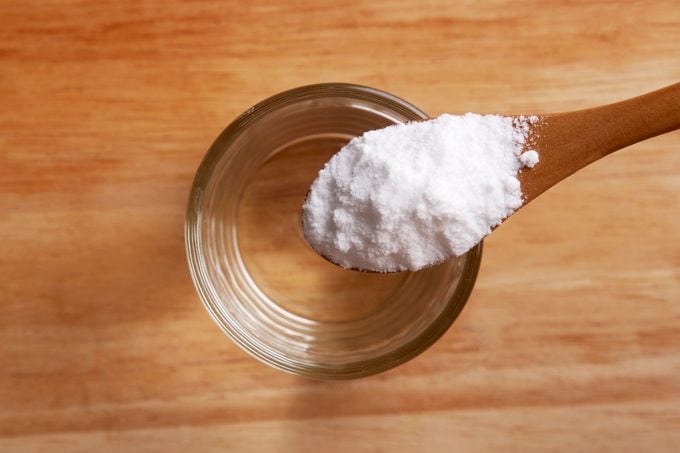
For a small crayon stain, mix 1 tablespoon baking soda with 1 teaspoon water. For larger areas, mix 2 to 3 tablespoons baking soda with 2 to 3 teaspoons of water. The paste should be dry and smooth in texture. If it’s not, adjust the ratio of baking soda and water until you get the correct consistency.
Step 2: Dip a cloth in water and the paste
Dip a soft, white cloth in warm water. Wring out the excess, and wrap the cloth over your pointer finger. Then dip your finger in the baking-soda paste. This technique works because it ensures you’re concentrating your efforts on the stain, not the wall. Excess water can damage both the paint and the drywall, which is why you need to keep it to a minimum.
Step 3: Apply the paste to the wall
With your cloth-covered pointer finger, carefully rub the paste over the crayon marks—and only the crayon marks. Then, with another clean and barely damp cloth, wipe away the residue and watch the stain lift!
One application should do the trick even if the “artwork” is large or you have multiple crayon layers from a diligent colorer. If the marks lift but aren’t completely removed, repeat the process until they have disappeared.
Step 4: Rinse
Once the crayon marks have been removed, use another clean, damp cloth to wipe over the area from top to bottom and left to right. This will ensure that the wall doesn’t show a circle or marks where you cleaned off the crayon.
Step 5: Try another technique, if necessary
If the wall still has any crayon marks, let the area dry, and try a different crayon-removal method from the list below.
Step 6: Dry
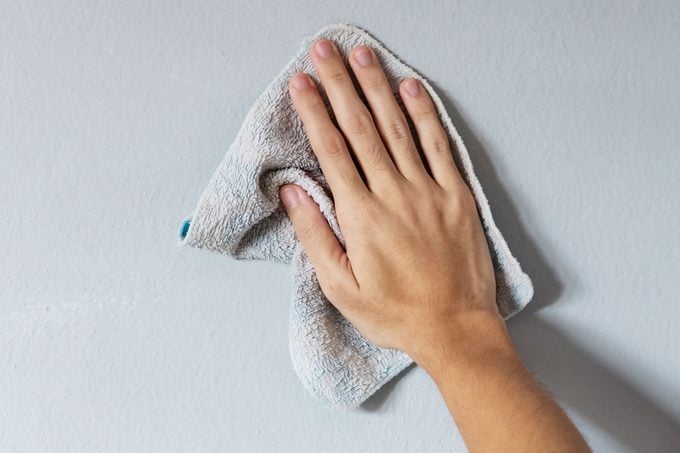
Using another clean, dry cloth, dry in the same way that you rinsed off the wall—top to bottom, and left to right. If you notice any residual baking soda, rinse the area with a barely damp cloth, and then re-dry.
| ♦ Pro tip |
| Rubbing in circles will remove the finish from semi-gloss and high-gloss paint. Make sure that you are following the top-to-bottom, left-to-right method for both cleaning and drying to ensure that you don’t accidentally damage your walls. |
Other methods for getting crayon off walls
If you’re unsuccessful with the baking-soda method or simply want to try something different, the following ways to clean your walls are also effective. Just remember that it’s always best to start with the least-harsh method first, since this will minimize the possibility of damage.
White eraser
If you have a tiny mark, a white art eraser a great place to start, especially if you have semi-gloss or high-gloss walls. An art teacher’s trick, this eraser will—you guessed it—”erase” crayon marks. If you don’t have one, try a pink pearl eraser and carefully rub away at the crayon marks.
Magic Eraser
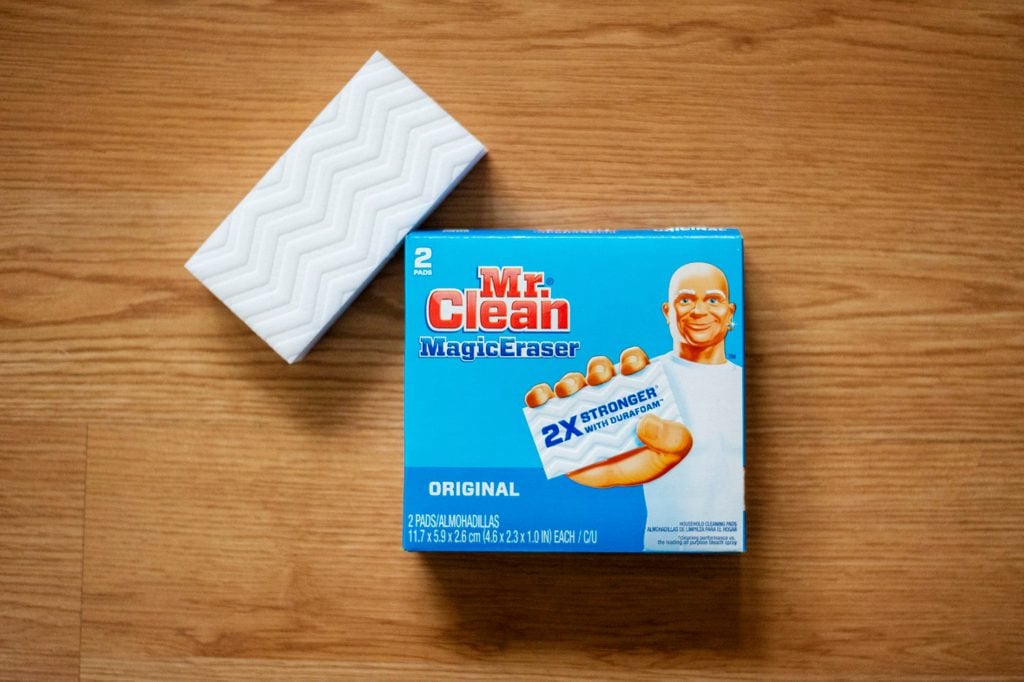
While Magic Erasers can be an effective way to remove crayon from walls, take care to scrub just on the crayon marks. Since these specialized sponges contain melamine foam, they can be a little too abrasive and also leave a sheen you don’t want on your walls. With that in mind, here’s how to use them carefully: Simply dampen the Magic Eraser or sponge, wring it out thoroughly, and use a corner or tip to rub away the crayon. If you don’t have a Magic Eraser handy, you can use a lightly dampened sponge instead.
Toothpaste
I hesitate to share this method because it relies on a specific type of toothpaste: white paste. If you were to try a blue or green gel, you would most likely have another problem on your hands because the colored toothpaste might stain your walls! While I wouldn’t start with this method, it does work because it’s a “cleaning” paste. The process is similar to the one you’d use with the baking-soda paste above: Cover your fingertip in a soft, white cleaning cloth, and dip it into water and then the toothpaste. Next, rub the area, wipe clean, rinse and dry.
Rubbing alcohol
I love rubbing alcohol in all sorts of cleaning situations—it can even remove ink stains from clothes. And while it isn’t my favorite method for removing crayons from walls, it might work on remaining crayon residue or if the other methods aren’t successful. Spot-test it in an inconspicuous spot first. If it’s safe for your walls, dip a cotton swab in rubbing alcohol, carefully rub it over the marks and follow with a clean, white cloth. If this is effective, continue until the area is clean.
Stainless steel scrubber
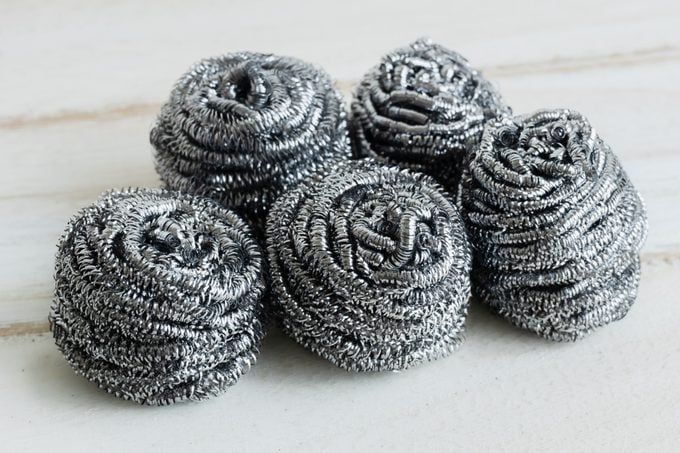
This is the strongest—and harshest—method, but it can be a good solution for highly textured walls like orange-peel or knockdown, as well as wallpaper with a texture that might be more difficult to get into the crevices with a soft cloth (since it can catch on the texture). With a dry stainless steel scrubber, apply the slightest bit of pressure to lift the crayon marks. If it proves to be effective on the area, continue.
What not to use to get crayon off walls
Seeing errant crayon marks in your home will likely prompt a panicked reaction, making you want to grab whatever bottle of cleaner is closest to you and start spraying the spot. Don’t do it! This is not how to get crayon off the wall effectively—instead, it increases the likelihood that you’ll damage your wall and set in the stain. Here are a couple of cleaning items to avoid when tackling this task:
- Spray cleaners. In addition to making the stain set, they can also cause the wax and pigment from the crayon to drip down the wall—spreading the stain and damaging your wall further.
- Bleach or ammonia. These harsh chemicals can remove the paint instead of the crayon.
- Paint remover. This will damage your walls—after all, its job is to remove paint!—as well as create noxious fumes in your home.
Why trust us
At Reader’s Digest, we’re committed to producing high-quality content by writers with expertise and experience in their field in consultation with relevant, qualified experts in the cleaning industry. For this piece on how to get crayon off the wall, Becky Rapinchuk, the founder of Clean Mama, tapped her experience as a cleaning expert with more than 15 years of experience, and then Ann Russell, TikTok’s “cleaning auntie” and the author of How to Clean Everything, gave it a rigorous review to ensure that all information is accurate and offers the best possible advice to readers. We verify all facts and data, back them with credible sourcing and revisit them over time to ensure they remain accurate and up to date. Read more about our team, our contributors and our editorial policies.


